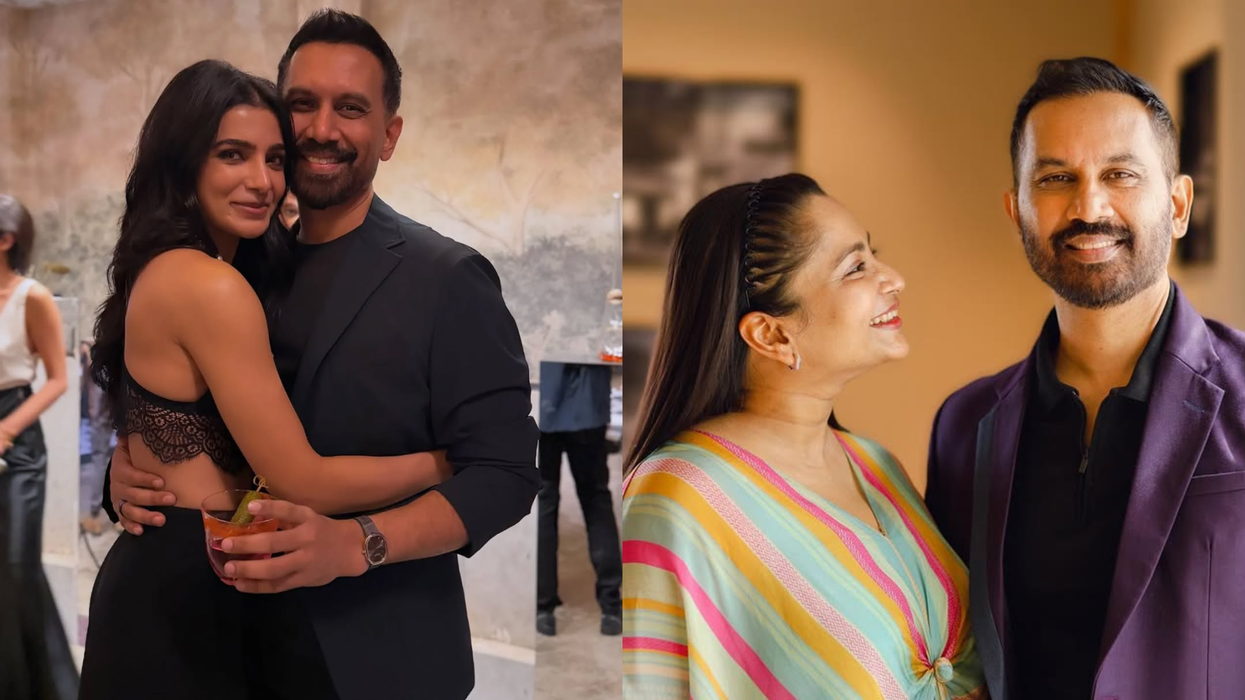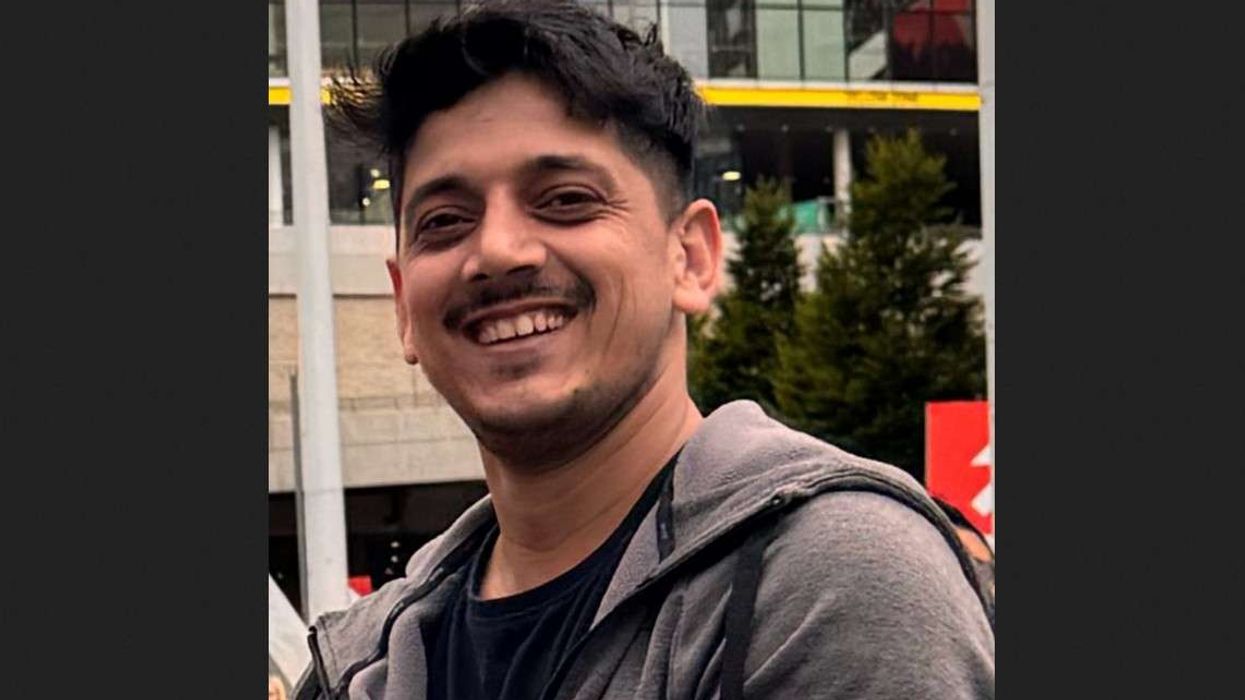TV PRESENTER ANILA CHOWDHRY TALKS ABOUT HER DREAM DESTINATION WEDDING AND THE JOURNEY INTO MARRIED LIFE
by ASJAD NAZIR
Newly married television presenter and producer Anila Chowdhry likes taking on her husband’s surname.
Another reason for the big smile on her face is a recent dream wedding in Abu Dhabi to Reece Chowdhry, who had surprised her with a marriage proposal close to Valentines Day in 2018.
The talented TV star is also overjoyed with the special bond she shares with her in-laws and has memories from the various ceremonies that will last a lifetime. Eastern Eye caught up with Anila to talk about her dream destination wedding and her journey into married life.
How did you feel getting engaged?
Seeing Reece go down on one knee was a big surprise and one of the best moments of my life. As we entered the penthouse suite of the Intercontinental Hotel there were rose petals and candles everywhere. He then played a fake news report that involved him telling me all the reasons he loves me, a dance by his family, and video messages from mine. I kept thinking, ‘wow, he’s really gone out of his way for our one year anniversary. How do I top this?’ It was only when I saw him pull out a ring did I know what was happening.
What happened next?
He took me to a room where my best friend and make-up artist Ash MUA was ready to prepare me for another surprise. With a new ball gown and jewellery, I entered another room blindfolded to the cheer of ‘surprise’ by both our families. My one wish was to have both the families present, particularly to receive their blessings instantly for such a big moment. We ended with a private dinner to complete the perfect day.
How did you bond with your future in-laws before getting married?
Both my in-laws and I made a conscious effort to bond, because relationships are a two-way street. I was at sea for around 18 hours accompanying my future sister-in-law Leah who swam The English Channel and subsequently raised £155,000 for cancer research. They invited me to events and I invited Reece to mine so that we could get to know each other’s family and friends. It was really helpful, as we had already formed a bond with all our guests by the time of our wedding.
Tell us about the various ceremonies?
Every guest was welcomed with a dhol reception, garlands, massages and tea. On the Friday, we held separate haldi ceremonies, followed by afternoon tea and informal welcome dinners where I had my mehndi applied. We decided that these ceremonies would be separate as we wanted to retain the element of tradition where both families ‘meet for the first time’ during the official engagements. On Saturday morning, we held a floral-themed welcome mehndi by the poolside where both sides officially joined for the first time, and guests could enjoy having henna applied. In the evening, we held a Mughal-inspired sangeet with drinks, canapés and live entertainment on the lawn in front of the Grand Mosque in Abu Dhabi.
Tell us about the entrances…
Reece entered the venue, holding a spear, and flanked by his father and uncle, to the song Azeem O Shaan from Jodhaa Akbar. I followed in a swan chariot carried by Dharbans to Deewani Mastani from the film Bajirao Mastani. Our guests found this one of their most memorable moments, as it was so unique and magical. One wedding highlight for me is the surprise family song and dance performances from both sides because their efforts and happiness showed how much we really had bonded and how close we had become.
What about the wedding itself…
And, then, it was our big day on Sunday. Reece arrived on a speedboat with his boys. My cousins, sisters and friends walked in as bridesmaids while my brothers walked me down the aisle. We had a Hindu ceremony on the beach where every ritual had corresponding playback music from a Bollywood film. It was all done in English, enabling every guest to follow and understand the rituals and be an integral part of the ceremony.
Tell us about the wedding reception?
We had a white-tie reception. Each table name was labelled after one of our shared values as a couple. Our first dance to Kuch Kuch Hota Hai was sung live, followed by speeches by my granddad, Reece’s dad, his best man, and the main man himself, Reece. I also had a father-daughter dance which I cried all the way through. My father is a man of few words, but the song he chose Just Call My Name by Bruce Springsteen spoke volumes. A revolving stage and with DJ Vix flown in from the UK meant it turned into one big party, ending at around 5am.
What was the biggest challenge of planning your destination wedding?
Planning it in a different country. But we had a team of planners and the hotel was brilliant. Both families held regular planning meetings and spoke every day. My older sister Mandeep and brother-in-law Daniel live in Dubai, and were extremely helpful. Leah organised an on-site crèche during the wedding. All the sisters developed their own relationships by organising parts of the wedding together. And my grandparents were both our rocks. Even extended family members and friends helped. It really was a team effort to help achieve our dream wedding. We really wanted to make it a personal experience so had welcome hampers placed in everybody’s rooms on their arrival, and thank you gifts delivered to them as they left.
How much did your husband get involved with the planning?
Reece was pivotal. He had envisioned a wedding abroad and on this scale. We often had impromptu first dance practices, where I would run into his arms hoping he would be able to twirl me. At the end of the day, it was a big day for both of us, so we both had to get involved fully.
Tell us about your wedding outfits?
I visited India for the first time ever to buy my outfits. I spent the first half of the trip with my mother and her family. Buying my wedding outfits, jewellery, and gifts for after the wedding was emotional, as it felt like taking a step closer to becoming what my mother has been to me. We chose a gorgeous princess cream-coloured gown for the welcome mehndi. I opted to wear a red and gold sari with pearl detail for my mandap ceremony, as my mother had worn a sari on her wedding. I paired it with a gold chain from Reece’s late grandmother to signify my respect and remembrance of her, and pride in taking her name as the next generation Chowdhry.
What about the other outfits?
I spent the second half of my trip with my mother-in-law. It was a great bonding experience. She loved seeing me try on outfits and was proud every time people reacted with awe when I walked out of the dressing room. We cried when buying my sangeet outfit, which she gifted as shagun. And we both designed my silver reception outfit, incorporating my favourite elements of feathers and a cape. She surprised me with the initials AR engraved. Reece and I had matching outfits for every occasion.
What key advice would you give a couple planning a wedding?
Our motto was, don’t sweat the small stuff and enjoy it.
What has life been like since you got married?
Busy. We relaxed on our honeymoon in the Maldives, and also set goals and aspirations for every aspect of our lives, and how we would achieve them together. So we hit the ground running when we returned. I am living with my in-laws and have quickly settled in, thanks to all the pre-wedding bonding. I miss my family, but try to see them as much as I can. The best feeling is knowing I am going home to Reece every day after work.
What was your most memorable moment from the wedding?
It was seeing Reece’s face as I walked down the aisle. The way he looked at me – only my heart can explain that moment. Seeing a mixture of adoration and pride. It was just bliss. And he looked perfect.
Today, a lot of women in the public eye are choosing to keep their name or are doing a double-barrelled surname; what made you want to change your name after marriage?
People question me how I can be a feminist and change my surname. To me, feminism is about choice. I pondered over the decision for quite some time, but it was one single moment that made me decide. Reece was speaking at his first ever event for his company RLC Ventures. He spoke in the room where we were going to have our legal ceremony in two weeks and joked he was testing it before tying the knot. This determined, funny, intelligent and handsome man thanked me, his then fiancé, for supporting him. I felt awe and admiration, and couldn’t think of anything better than joining him as one and being called his wife. Yes, I also inspire him. But like I said, feminism is about choice and I respect his choice.
Is there any key message you want to give to women who are about to get married?
Find your feet and take your time. Stay true to who you are as a person, because that is the person everyone loves. Make an effort to communicate with everyone around you every step of the way, to build and strengthen relationships.
Tell us, what projects are you working on at the moment?
I am working on various projects like presenting the news for The Telegraph on Alexa, and also producing Channel 5’s The Vine Show. I have also just launched my new website, re-launching as Anila Chowdhry.
Today, what inspires you?
People and their stories.
What is the best thing about being married?
Having the best husband, two loving families, and sharing amazing friends.





 Jahanvi Tiwari is reshaping global beauty by celebrating brown skin Jahanvi Tiwari is reshaping global beauty by celebrating brown skin
Jahanvi Tiwari is reshaping global beauty by celebrating brown skin Jahanvi Tiwari is reshaping global beauty by celebrating brown skin  Jahanvi Tiwari celebrates brown beauty for a global audience
Jahanvi Tiwari celebrates brown beauty for a global audience The Brown Daughter creator champions inclusivity and self-confidence
The Brown Daughter creator champions inclusivity and self-confidence Jahanvi Tiwari turns representation into a lifestyle movement
Jahanvi Tiwari turns representation into a lifestyle movement 






